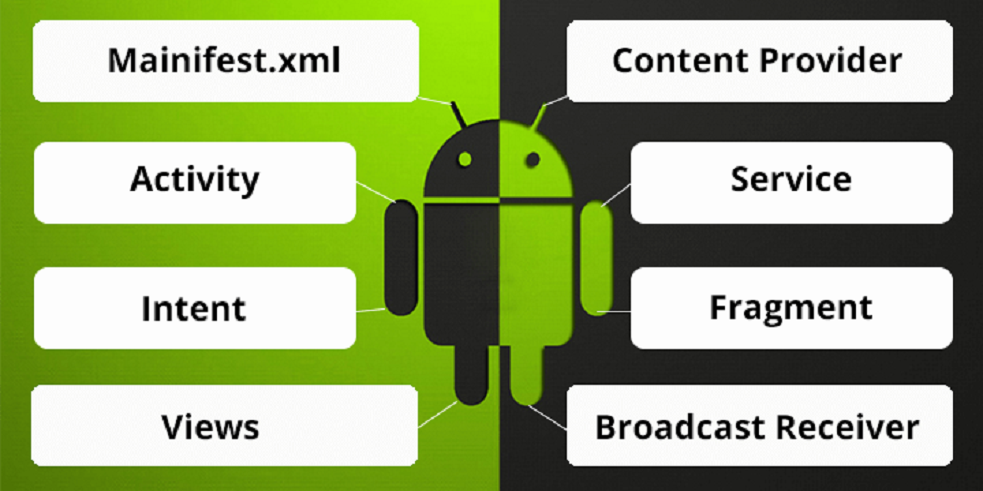Android
Android is a mobile operating system based on a modified version of the Linux kernel and other open-source software, designed primarily for touchscreen mobile devices such as smartphones and tablets.
The core building blocks or fundamental components of android are activities, views, intents, services, content providers, fragments, and AndroidManifest. XML.
An Android application consists of various building blocks that help developers to keep things organized. It gives the flexibility to maintain assets, pictures, animations, movie clips, and implement the localization functionality.
Application components are the building blocks of an Android application. The components are coupled by the application manifest file AndroidManifest.xml that describes each component of the application and how they interact.
The core building blocks of Android are-
- Activity
- View
- Intent
- Service
- Content Provider
- Fragment
- AndroidManifest.xml
- Android Virtual Device (AVD)
Activity
An activity is a single-screen user interface, an entry point for a user. It is the subclass of the context Theme Wrapper class. The activity starts with the onCreate() callback method.
View
A view is a basic component of the UI elements in Android such as button, label, text field, etc. are drawn on-screen including buttons, lists forms, etc. Anything that you can see is considered a view.
Intent
Intents are words that are sent among the major building blocks. Intents are asynchronous; meaning the code that sends them doesn’t have to wait for them to be completed.
The intent is used to invoke components. It is mainly used to:
- Start the service
- Launch an activity
- Display a web page
- Display a list of contacts
- Broadcast a message
- Dial a phone call etc.
Service
Service is a background process that can run for a long time.
It runs without any interaction even after the application is destroyed.
They are two types of services, first is the starService(), which runs in the background for an infinite time, even if the activity is destroyed.
The second is bindServices() offers a client-server interface that allows to interface allows to interact with the service, send or get requests.
Content Provider
The content provider handles data & database management issues. They are used to share data between the applications on requests. Content provider stores data in several ways and stores it in a database, files, or over a network.
Fragment
The fragment represents a portion of a user interface in an Activity. It is an action that can display more than one fragment on the same screen. It is like the sub-activity.
AndroidManifest.xml
AndroidManfest.xml is the most important file in your project. It contains information about activities, content providers, permissions, etc. you must have this file in your app. It is like the web.xml file in Java EE.
Android Virtual Device (AVD)
Android Virtual Device (AVD) is used to test the android application without the need for mobile or tablet etc. It can be created in different configurations to emulate different types of real devices.
Final Words
Android core building blocks are simply a piece of code that has a distinct life-cycle. The fundamental building blocks of android are like tables that are very much like a data table or spreadsheet containing rows (records) arranged in different columns (fields).
If you felt good to know about Android and willing to Android Training in Noida and know more about Android Course in Noida, You can visit Aptron, Android Institute in Noida. This institute is one of the best places for learning Android course. Visit there and touch your dreamland.

